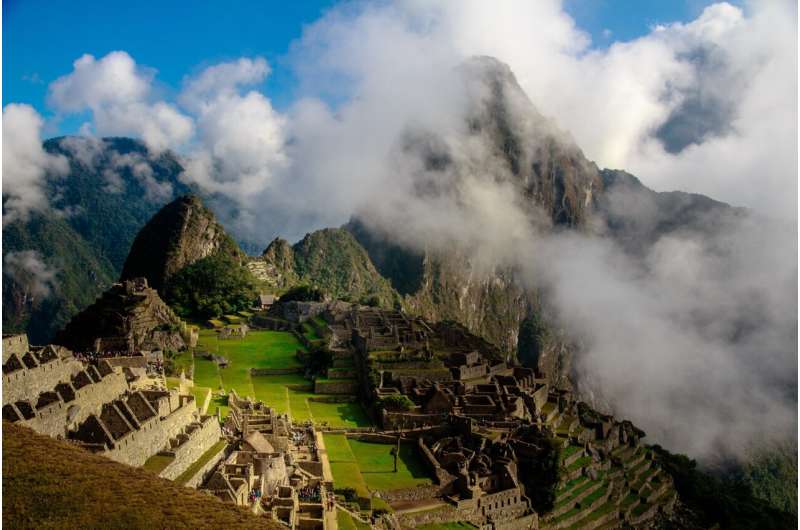December 23, 2022 report
Characterizing red pigment in ancient bone samples in Peru to reveal their sources

A team of researchers affiliated with several institutions in the U.S. and one in Canada has characterized a large number of red pigment samples found on the bones of ancient people who once lived in what is now southern Peru. In their paper published in Journal of Anthropological Archaeology, the group describes their study of the pigments.
Prior studies of the use of red pigments in funeral rites by people who lived in ancient Peru suggest the practice is related to prolonging the existence of the dead. In this new effort, the researchers used various techniques to analyze red pigments found on bones left behind by members of the Chincha, people who lived around Peru over the years 1000 AD to 1825 AD. The pigments were found on bones excavated from over 100 chullpas, or mass burial graves. The aim of the research was to determine why the bones were painted and how it was done.
To find their answers, the researchers subjected the 35 bones (25 of which were skulls) to laser ablation, X-ray fluorescence spectrometry and X-ray powder diffraction in order to identify all of the components in the pigments. They found that the bulk of them were made using iron-based ochres such as hematite. Another major material they found was cinnabar, which had a mercury base.
They also found that cinnabar was not native to the local area—it would have been imported. This suggested its use was likely meant for important or rich people. The researchers also noted that while there were some women and children's bones in their collection, most were from adult males.
The researchers concluded that the arrangement of the pigments on the bones indicates it had been applied using either leaves or bare fingers. The researchers also noted that the arrangement of the bones in the chullpas suggested that the pigments may have been applied long after the people had been skeletonized. This, they suggest, indicates that the people of the time may have exhumed loved ones and applied the paints to their bones to protect them from European invaders.
More information: Jacob L. Bongers et al, Painting personhood: Red pigment practices in southern Peru, Journal of Anthropological Archaeology (2022). DOI: 10.1016/j.jaa.2022.101480
© 2022 Science X Network





















